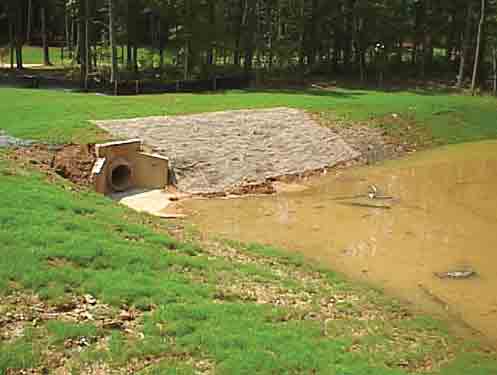


Soft Armoring is the process by which soft, pliable open-weave matting (i.e. jute, coir, coconut, hemp, burlap, etc.) is placed onto the soil surface. The soil-specific anionic polymer is then applied, and reacts with the metals and clays within the soil to bind it together. This complex attaches to the matting, creating a highly erosive resistant surface that will support vegetation along with aiding in attachment of fine particulate to the matting surface.
Polymer-enhanced soft armor applications are cost effective and easy to install. Place an open-weave geotextile fabric flush to the soil surface (do not allow tenting). Apply the correct powder polymer for the specific soil and clay type to the surface of the matting. Much of the polymer will fall through the matting and contact the soil, the rest will attach directly to the matting. This system produces a matrix that is highly resistant to erosion. Seed, fertilizer, lime (if needed) and polymer may be added together for ease of application.
Heavier, closer-weave matting may be used where highly erosive forces are anticipated (such as river banks where wave action will occur). The polymer, seed, fertilizer, and lime (if needed) should be placed on the soil surface first before placement of this type of matting. All current matting installation techniques should be followed to prevent matting failure.
Further erosion to this slope (as shown in the photo on the left) is prevented by using the soft armoring technique around the headwall.